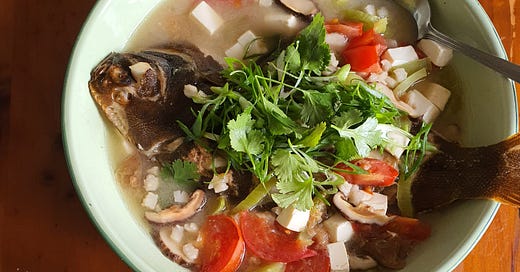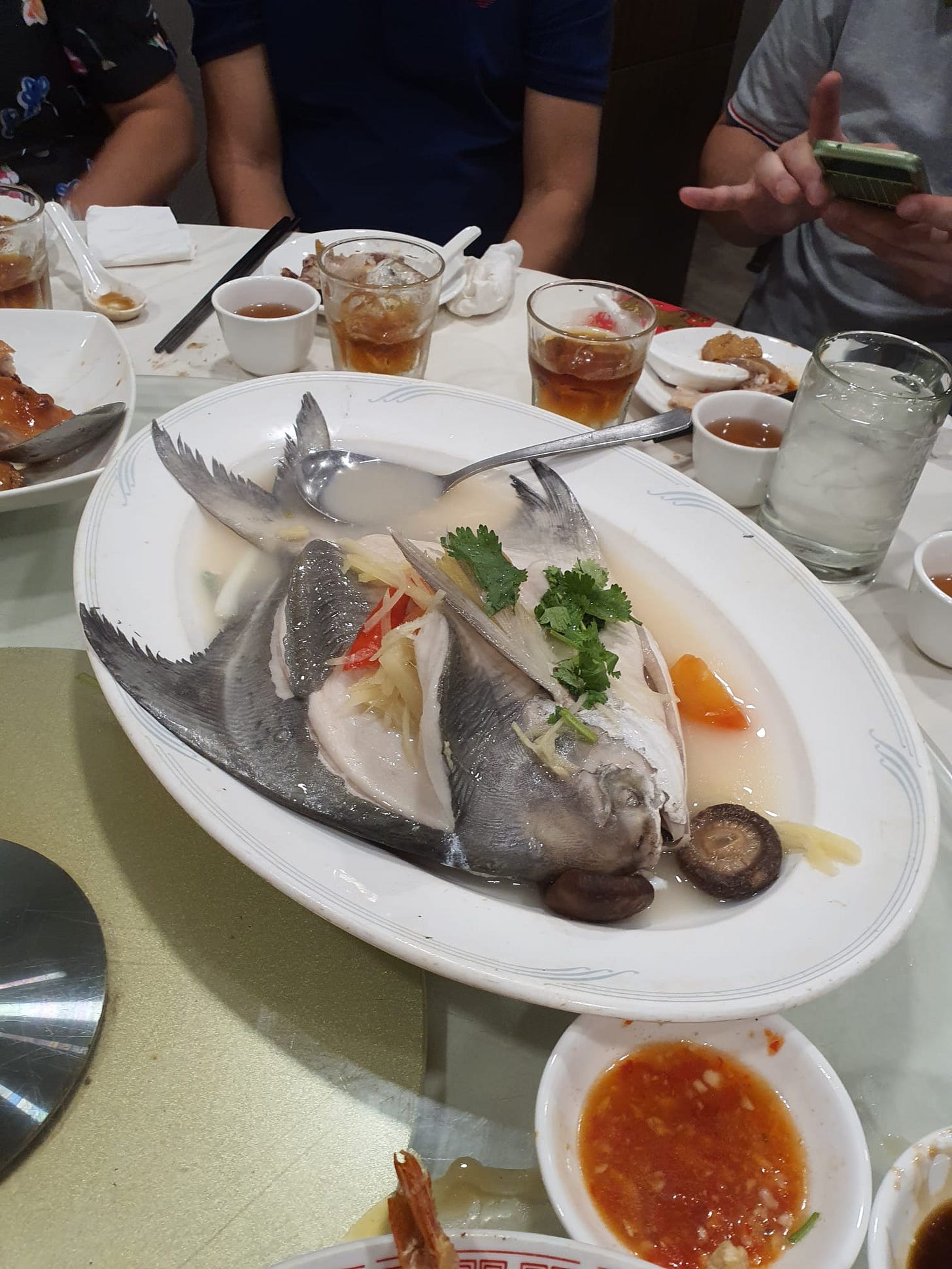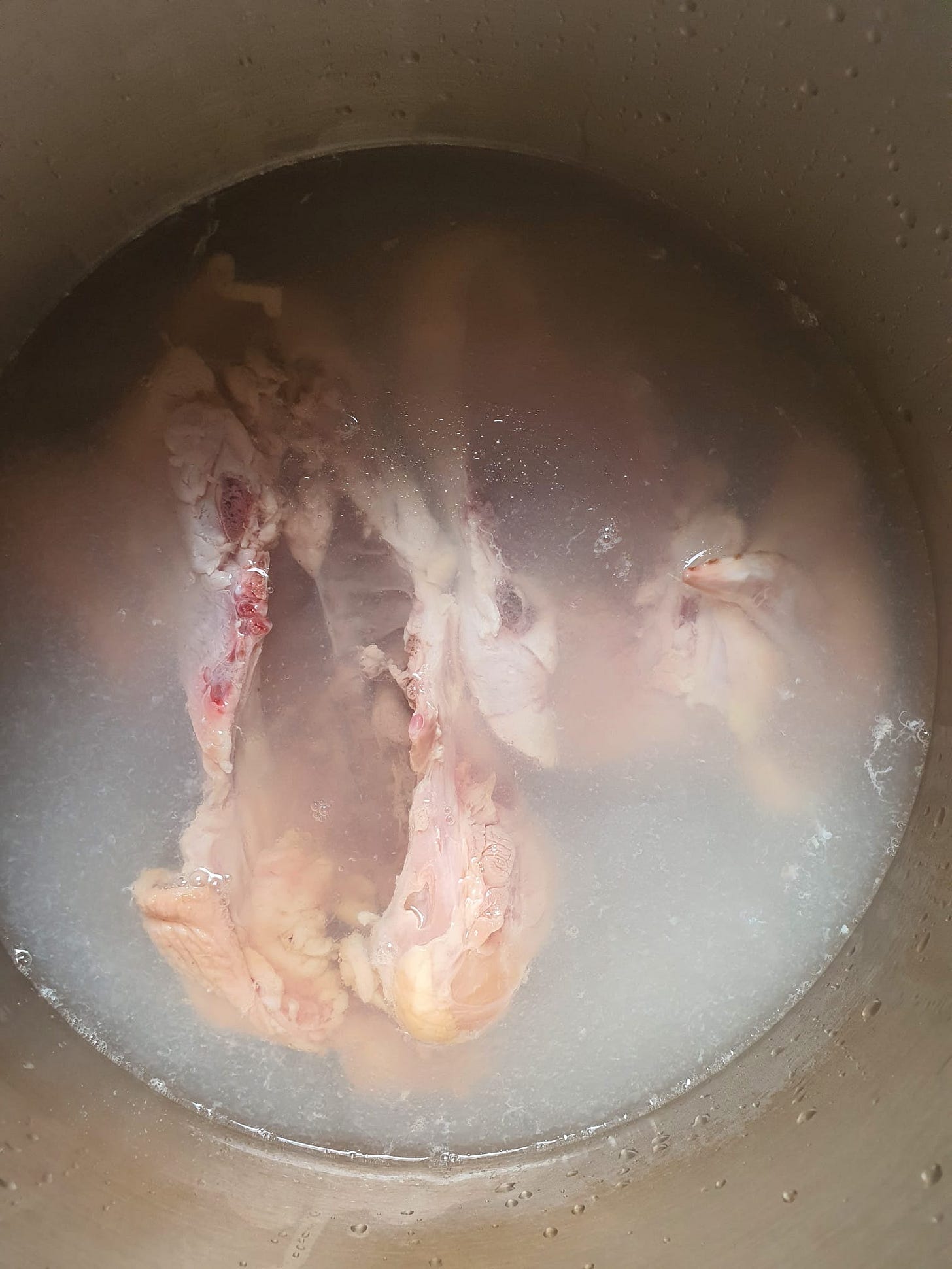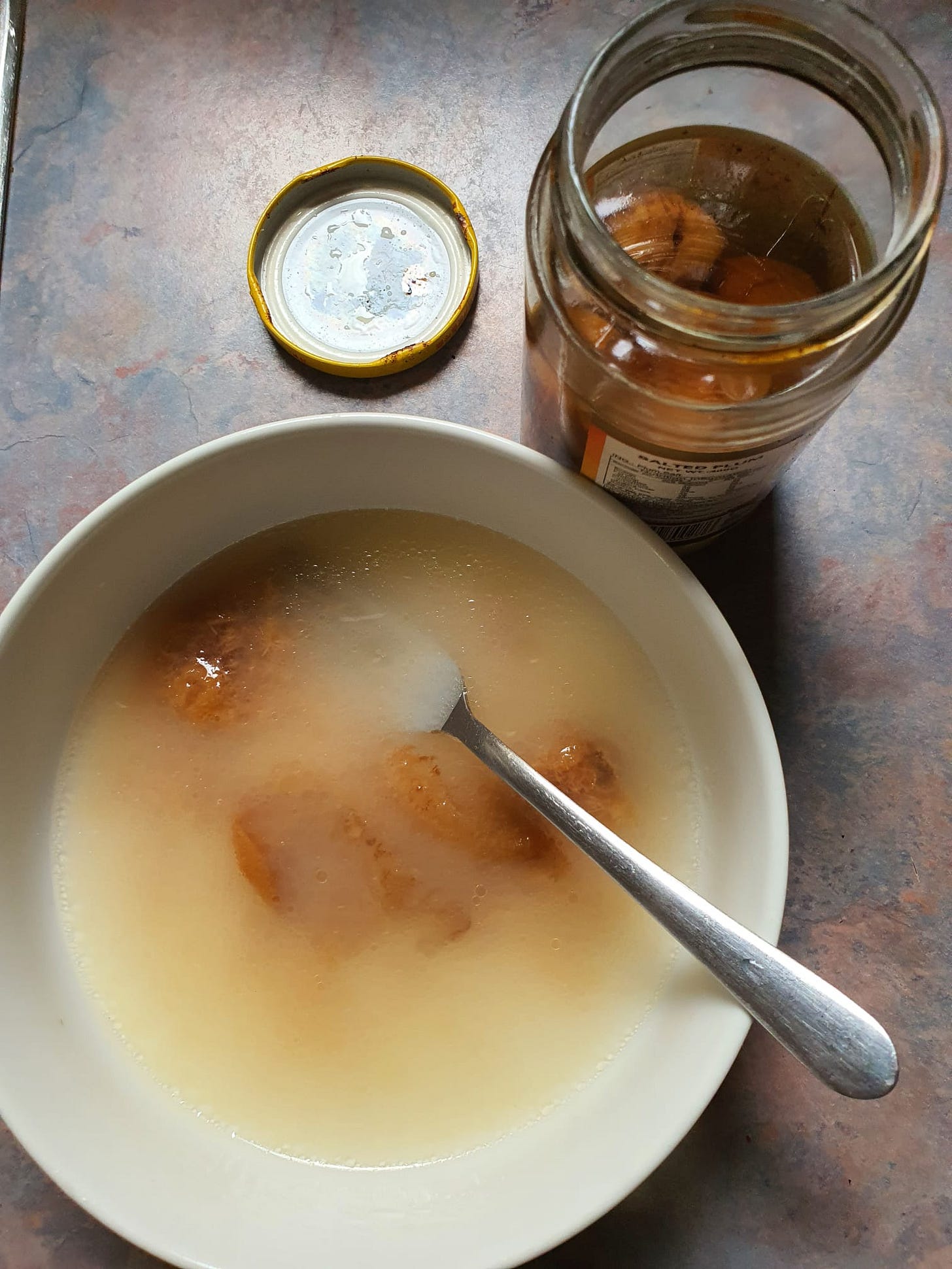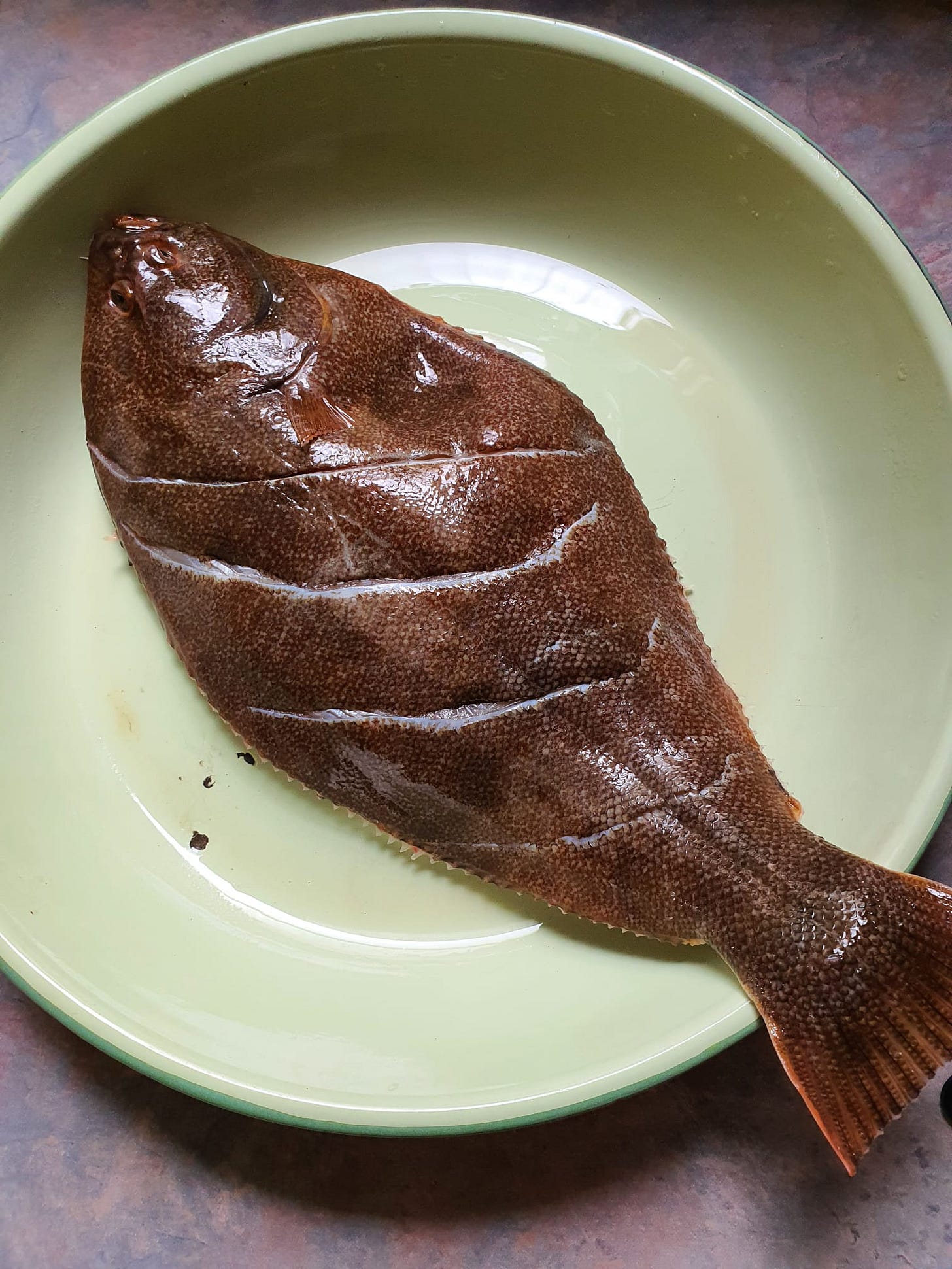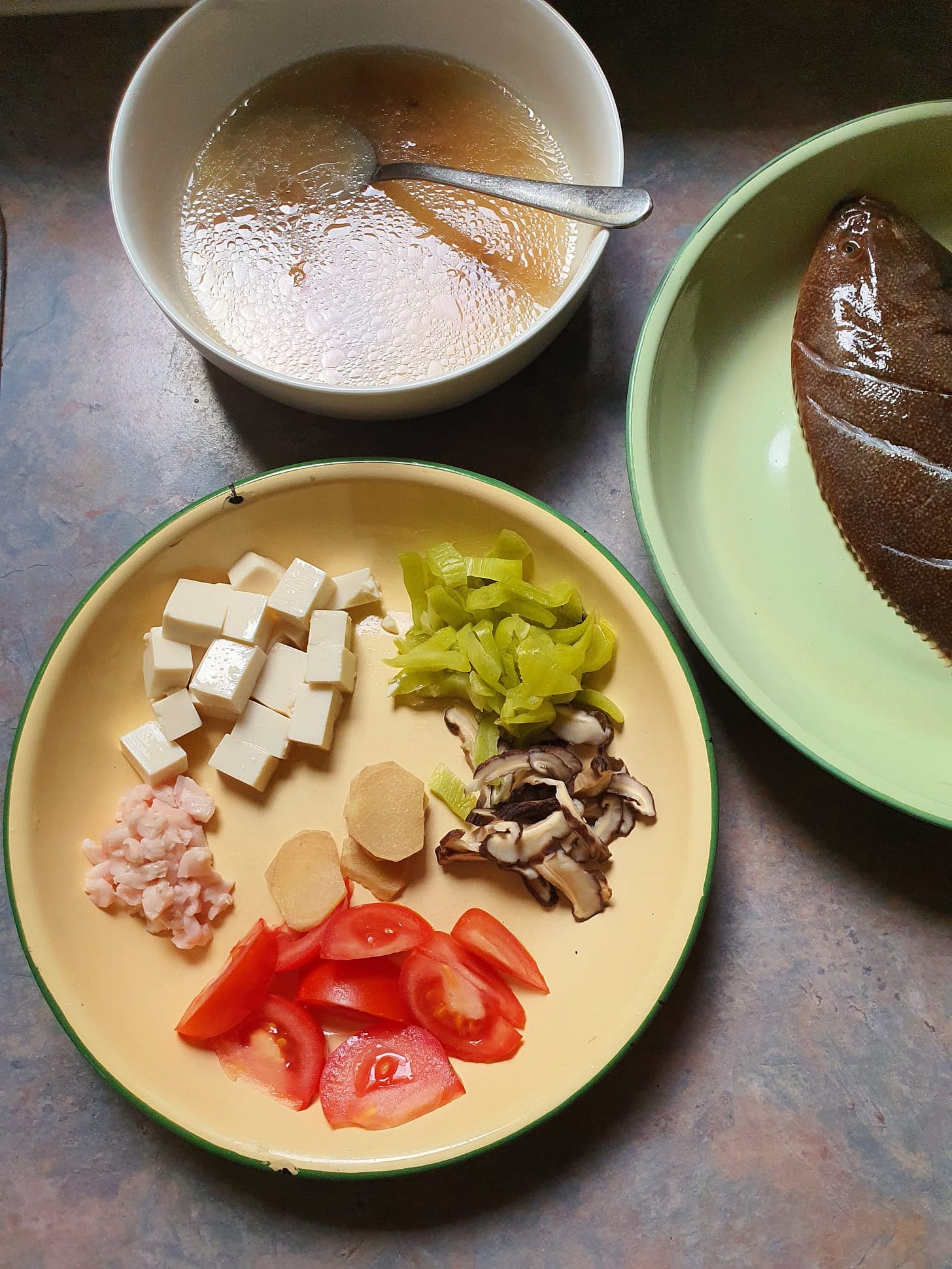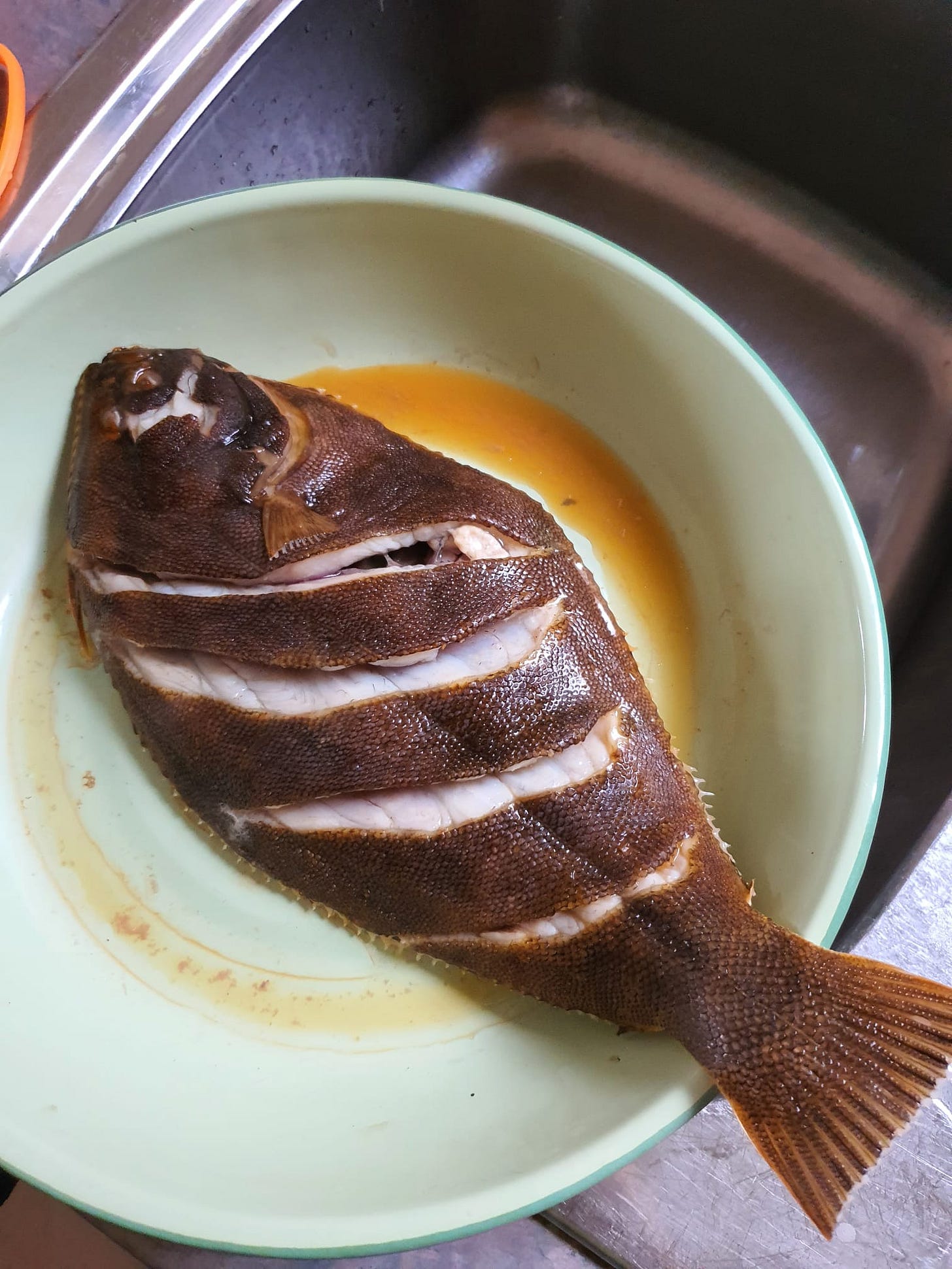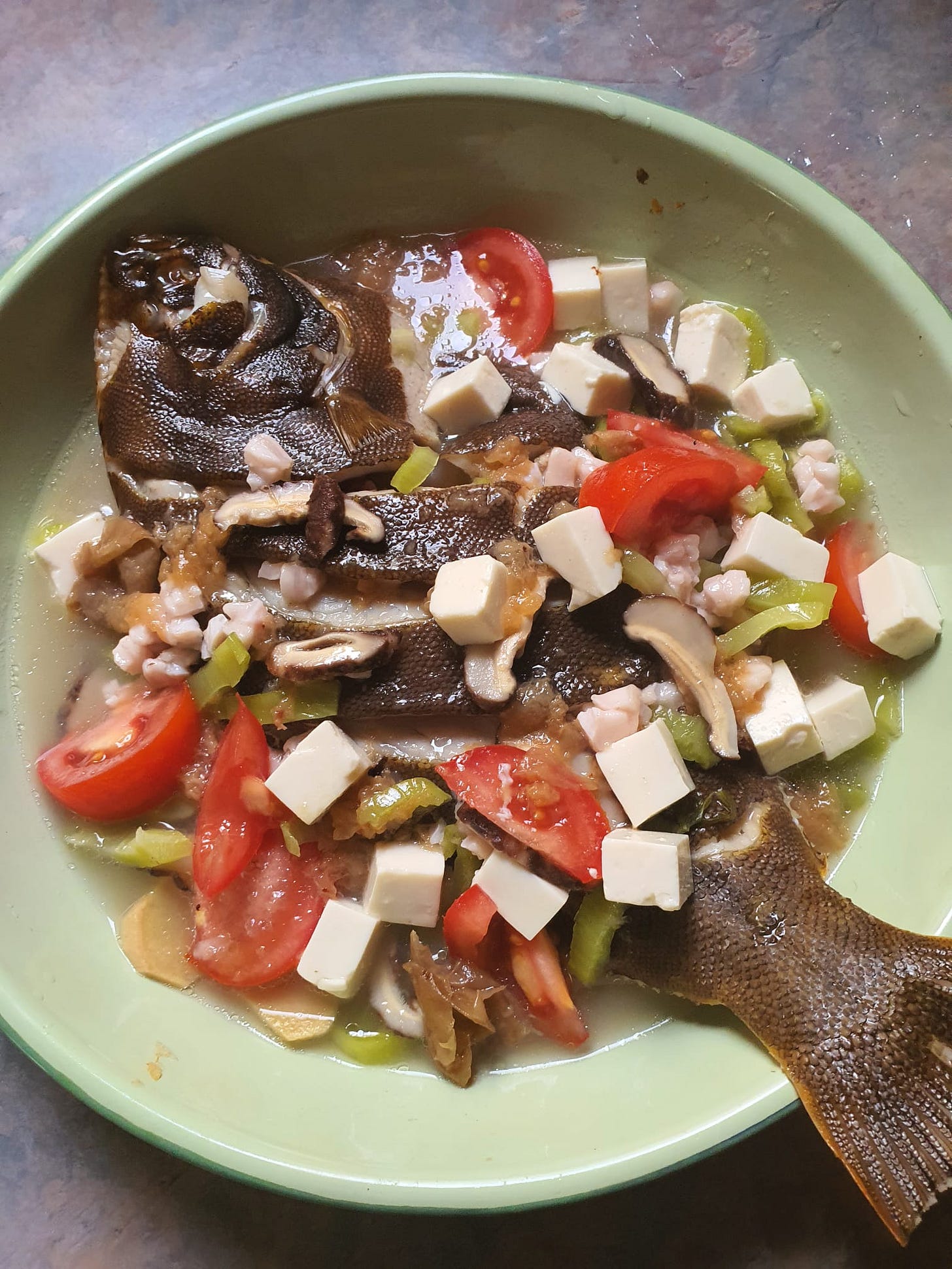Teochew steamed fish
The worst part of a hasty move is having to use up pantry items quickly. If you look into my pantry, you’ll find enough dried food, canned food and condiments to last at least a few months. This is both our fault - I like having a range of ingredients at my disposal so that I can cook whatever I want when the mood strikes, and Wex can never pass up a deal at the supermarket. Our strategy in the upcoming weeks is to buy only fresh meat/ seafood/ produce and to cook dishes that utilise whatever pantry ingredients we have. One of these items is salted plums, which immediately brought Teochew steamed fish to mind. It is perfect for my state of mind - I just arrived in Daylesford from Singapore a couple of days ago and have been feeling rather scattered.
To me, fresh fish is the best steamed. Whole, fried fish - especially the kind slathered in sweet sauce - is really not my thing. I’m a creature of habit and there are three types of steamed fish that I make at home. There’s the reliable Cantonese-style steamed fish that is soy-based, the punchy taucheo (fermented bean paste) with crispy lard version, and then there’s Teochew steamed fish. Different steamed fish for different moods. Teochew steamed fish is soothing, comforting and always appetising. Here’s the version at Chao Shan Cuisine in Singapore:
For those of you who’ve not had it, what makes Teochew steamed fish distinctive is the tangy brininess that comes from the preserved mustard and salted plums (similar to Japanese umeboshi). The accompanying broth that the fish sits in is as much the star as the fish itself.
While you can certainly use store-bought chicken stock, I find that with something as simple as steamed fish, it pays to use homemade. When you have a pressure-cooker like I do, it is not difficult or labour intensive. I cut a chicken carcass in half with kitchen scissors and cover it with boiling water (a tip from my mom who swears that it makes the soup better). Pressure-cook for about half an hour, or as long as you can afford. This is how the chicken and water look like, pre-pressure-cooking:
When the chicken stock is ready, remove some from the pot and mash in one or two salted plums. Some people also add in some of the brine from the salted plums, but I don’t. I find that the plums provide enough kick on their own.
Prepare the fish by scrubbing it with salt to clean and exfoliate it before rinsing with water. Trim the fins, if you prefer, then make several deep cuts on both sides of the fish (this is the most classic way to do it, but I’m not fussed). I’m using a flounder, which I find tasty prepared this way, but of course you could use the more traditional white or golden pomfret (black pomfrets are more suitable for frying).
Prepare the toppings: silken tofu, preserved mustard, rehydrated shiitake, ginger, fresh tomatoes and pork fat. You can keep it as simple or elaborate as you like, but the preserved mustard is essential. Traditionalists emphasise the use of pork fat though it is not as common these days, with people becoming more health-conscious.
Steam the fish briefly, or until it exudes liquid, about 2 minutes. This liquid usually tastes rather fishy so discard it.
Scatter the toppings over the fish, then pour over the chicken stock:
Steam for a few more minutes until the fish is fully cooked, the tomatoes collapse and the broth looks milky:
Top with coriander and sliced spring onion. Serve with lots of rice and don’t waste that broth!
Teochew steamed fish
Serves 2-3

